Computer audio sound cards are the norm at nearly all radio stations. I often wonder, am I using the best audio quality sound card? There are some trade-offs on the quality vs. cost curve. At the expensive end of the curve, one can spend a lot of money on an excellent sound card. The question is, is it worth it? The laws of diminishing returns state: No. High-quality reproduction audio can be obtained for a reasonable price. The one possible exception to that rule would be production studios, especially where music mix-downs occur.
I would establish the basic requirement for a professional sound card is balanced audio in and out, either analog, digital, or preferably, both. Almost all sound cards work on PCI bus architecture, some are available with PCMCIA (laptop) or USB. For permanent installations, an internal PCI bus card is preferred.
Keeping an apples: apples comparison, this comparison it limited to PCI bus, stereo input/output, and analog and digital balanced audio units for general use. Manufacturers of these cards often have other units with a higher number of input/output combinations if that is desired. There are several cards to choose from:
The first and preferred general all-around sound card that I use is the Digigram VX222HR series. This is a mid-price range PCI card, running about $525.00 per copy.
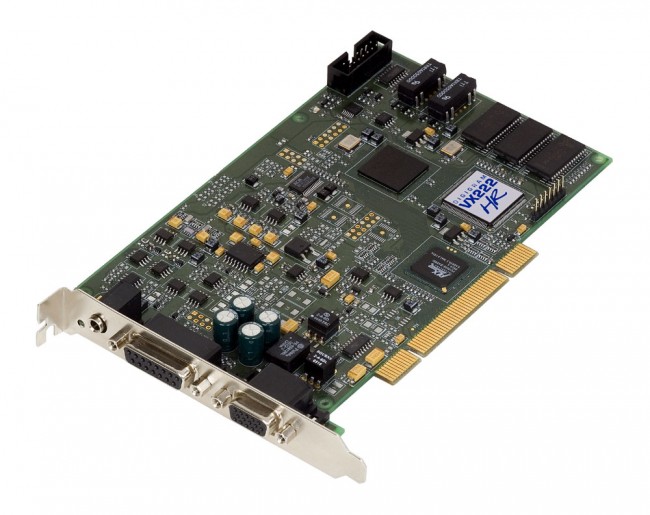
These are the cards preferred by BE Audiovault, ENCO, and others. I have found them to be easy to install with copious documentation and driver downloads available online. The VX series cards are available in 2, 4, 8, or 12 input/output configurations. The HR suffix stands for “High Resolution,” which indicates a 192 KHz sample rate. This card is capable of generating baseband composite audio, including RDS and subcarriers, with a program like Breakaway Broadcast.
Quick Specs:
- 2/2 balanced analog and digital AES/EBU I/Os
- A comprehensive set of drivers: driver for the Digigram SDK, as well as low-latency WDM DirectSound, ASIO, and Wave drivers
- 32-bit/66 MHz PCI Master mode, PCI and PCI-X compatible interface
- 24-bit/192 kHz converters
- LTC input and inter-board Sync
- Windows 2003 server, 2008 server, Seven, Eight, Vista, XP (32 and 64 bit), ALSA (Linux)
- Hardware SRC on AES input and separate AES sync input (available on special request)
Next is the Lynx L22-PCI. This card comes with a rudimentary 16-channel mixer program. I have found them to be durable and slightly more flexible than the Digigram cards. They run about $670.00 each. Again, capable of a 192 KHz sample rate on the analog input/outputs. Like Digigram, Lynx has several other sound cards with multiple inputs/outputs which are appropriate for broadcast applications.
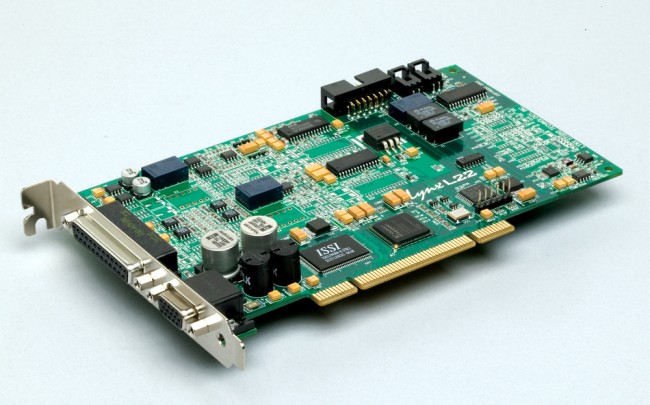
Specifications:
- 200kHz sample rate / 100kHz analog bandwidth (Supported with all drivers)
- Two 24-bit balanced analog inputs and outputs
- +4dBu or -10dBV line levels selectable per channel pair
- 24-bit AES3 or S/PDIF I/O with full status and subcode support
- Sample rate conversion on digital input
- Non-audio digital I/O support for Dolby Digital® and HDCD
- 32-channel / 32-bit digital mixer with 16 sub outputs
- Multiple dither algorithms per channel
- Word, 256 Word, 13.5MHz or 27MHz clock sync
- The extremely low-jitter tunable sample clock generator
- Dedicated clock frequency diagnostic hardware
- Multiple-board audio data routing and sync
- Two LStream™ ports support 8 additional I/O channels each
- Compatible with LStream modules for ADAT and AES/EBU standards
- Zero-wait state, 16-channel, scatter-gather DMA engine
- Windows 2000/XP/XPx64/Seven/Eight/Vista/Vistax64: MME, ASIO 2.0, WDM, DirectSound, Direct Kernel Streaming and GSIF
- Macintosh OSX: CoreAudio (10.4)
- Linux, FreeBSD: OSS
- RoHS Compliant
- Optional LStream Expansion Module LS-ADAT: provides sixteen-channel 24-bit ADAT optical I/O (Internal)
- Optional LStream Expansion Module LS-AES: provides eight-channel 24-bit/96kHz AES/EBU or S/PDIF digital I/O (Internal)
Audio Science makes several different sound cards, which are used in BSI and others in automation systems. These cards run about $675 each.
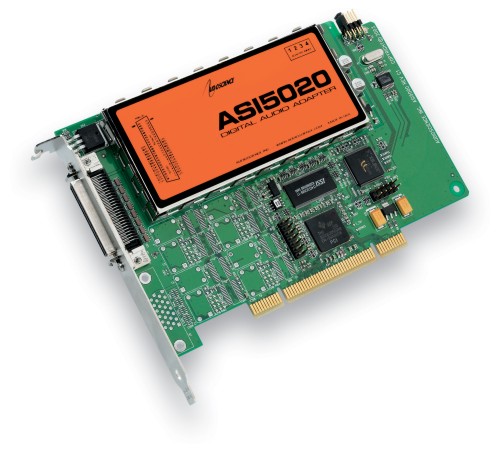
Specifications:
- 6 stereo streams of playback into 2 stereo outputs
- 4 stereo streams of record from 2 stereo inputs
- PCM format with sample rates to 192kHz
- Balanced stereo analog I/O with levels to +24dBu
- 24bit ADC and DAC with 110dB DNR and 0.0015% THD+N
- SoundGuard™ transient voltage suppression on all I/O
- Short length PCI format (6.6 inches/168mm)
- Up to 4 cards in one system
- Windows 2000, XP and Linux software drivers available.
There are several other cards and card manufactures which do not use balanced audio. These cards can be used with caution, but it is not recommended in high RF environments like transmitter sites or studios located at transmitter sites. Appropriate measures for converting audio from balanced to unbalanced must be observed.
Further, there are many ethersound systems coming into the product pipeline which convert audio directly to TCP/IP for routing over an ethernet 802.x based network. These systems are coming down in price and are being looked at more favorably by broadcast groups. This is the future of broadcast audio.


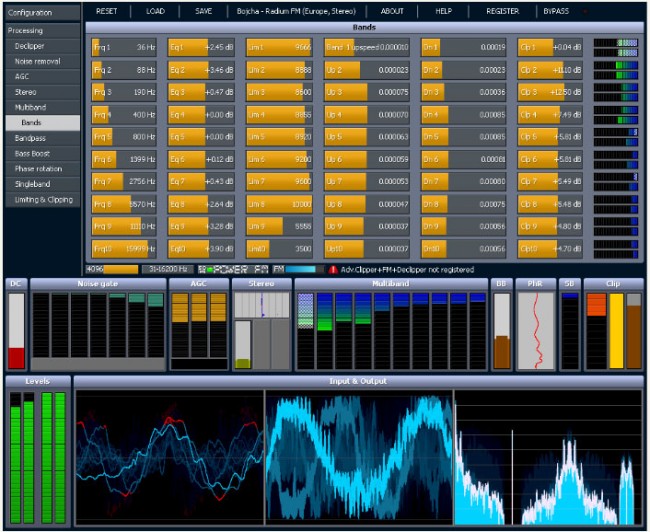
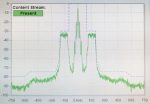
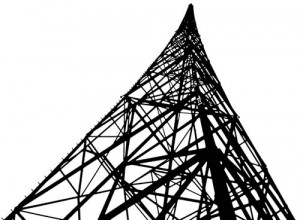

I shopped around and after seeing what some stations are paying for sound cards, I chose the Echo “MIA MIDI. It meets most of the above mentioned specifications and performs extremely well. I have had this card since 2005 and I would rate it as simply excellent for the price.
@John, That looks like a good card, but the sample rate is 96 KHz. The above cards all have 192 KHz sample rates, which are required if one wants to do base band audio and use the stereo generator in break away broadcast software.
According to Nyquist, 64 kbps is adequate for a channel on a T1 channel bank for very good voice quality. Now, I agree with you that 192 kbps is double what I have, however, the majority of streaming done by radio stations is at 64 kbps to conserve bandwidth with a maximum of IP listeners. Much music downloadable on the Internet is at 128 kbps, and that value seems to be the most popular standard out there. I have compared all of the sampling rates with the same music, and I cannot really see much difference above a 96 kbps rate. You must be a purist with digital audio, and probably would mandate wav files at 320 kbps on your stations! Paul, I really doubt the average radio listener could really tell the difference between 96 kbps and 192 kbps rate, especially with mp3 which seems to be a defacto standard these days. Am I right or wrong?
@John, you are not wrong. BTW, I do advocate .wav files for music storage, especially since hard drive space is so inexpensive these days. Regarding 96 vs 192, you are correct that almost nobody will be able to tell the difference, especially once it has gone through an STL/Exciter/PA/Antenna -> Antenna/receiver/speaker/free space/ear. The reason why I am interested in 192 KHz sample rate is for use as a FM stereo generator/processor. With 192 KHz sample rate, Breakaway Broadcast can generate L+R, L-R, 19 KHz, 57 KHz RDS and another subcarrier all from the line output connector. I think Breakaway Broadcast is ahead of its time and others are developing processing software to be used on a standard computer.
Paul, you are right about hard drive space and its continuing downward price spiral, however .wav files are simply enormous and a waste no matter how you look at it. FLAC, another lossless codec brings in a saving of space and probably better than mp3, although for broadcasting on AM, I would stick with mp3. I am not familiar with “Breakaway Broadcast” and will have to study it. I was simply addressing sound cards from a quality of reproduction standpoint with respect to transmission of digitized audio files over an analog medium. At the time when I chose the Echo “MIA MIDI”, some sound cards were going for upwards of $1500 which to me seemed extreme and destined to come down in price.
Paul, now you really got me going on this issue of sound cards. After doing some reading, it appears that they will all be obsolete shortly with the advent of “virtual audio” software. This will totally eliminate the “Sound” cards in the near future.
hello
when thinking of a sound card and availability in local markets i cant find the ones you have mentioned the best i can find the creative sound cards with many levels. dose that do the job for a FM broadcasting?
sound cards like creative PCI Express Sound Blaster X-Fi Xtreme Audio or at best Sound Blaster X-Fi Titanium HD
do you think that will do the job connected to the airmate usb Mixer using a good computer and a audio processor ?
No, not recommended. Lacks balanced input/output, Creative cards annoyingly often resample every incoming audio to a single rate. Their drivers are bloated and often buggy. And not suited for baseband multiplex generation on Breakaway Broadcast. And in a RF environment consumer audio cards perform poorly. As Paul says, get a professional card. SoundBlasters are not very good.
Another major thing to note. MP3 is not fit for broadcast use. It is not a multi-generational robust codec algorithm. And in most if not all modern broadcast plants, there will be several conversions along the way. .wav or .bwf files are much better even for AM use, if you must compress use .mp2 files. MP3 files suffer from cascading algorithms with those multiple conversions in a broadcast plant.
Please give me information on how to order the VX222HR.
My office number is XXX-XXX-XXXX.
Thanks,
Warren Lee, GM
You need to contact a vendor like Broadcaster’s General Store or SCMS. Google is your friend.